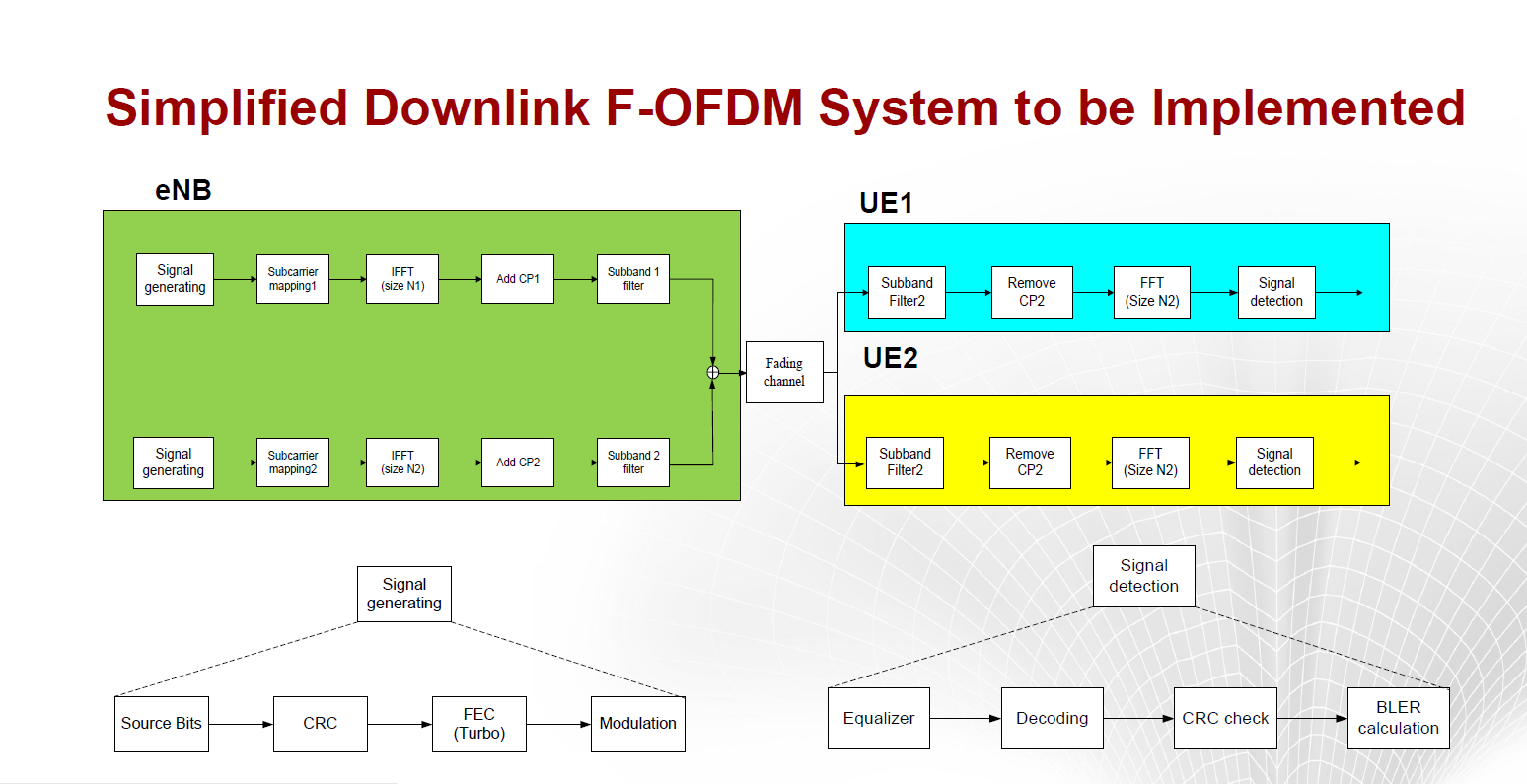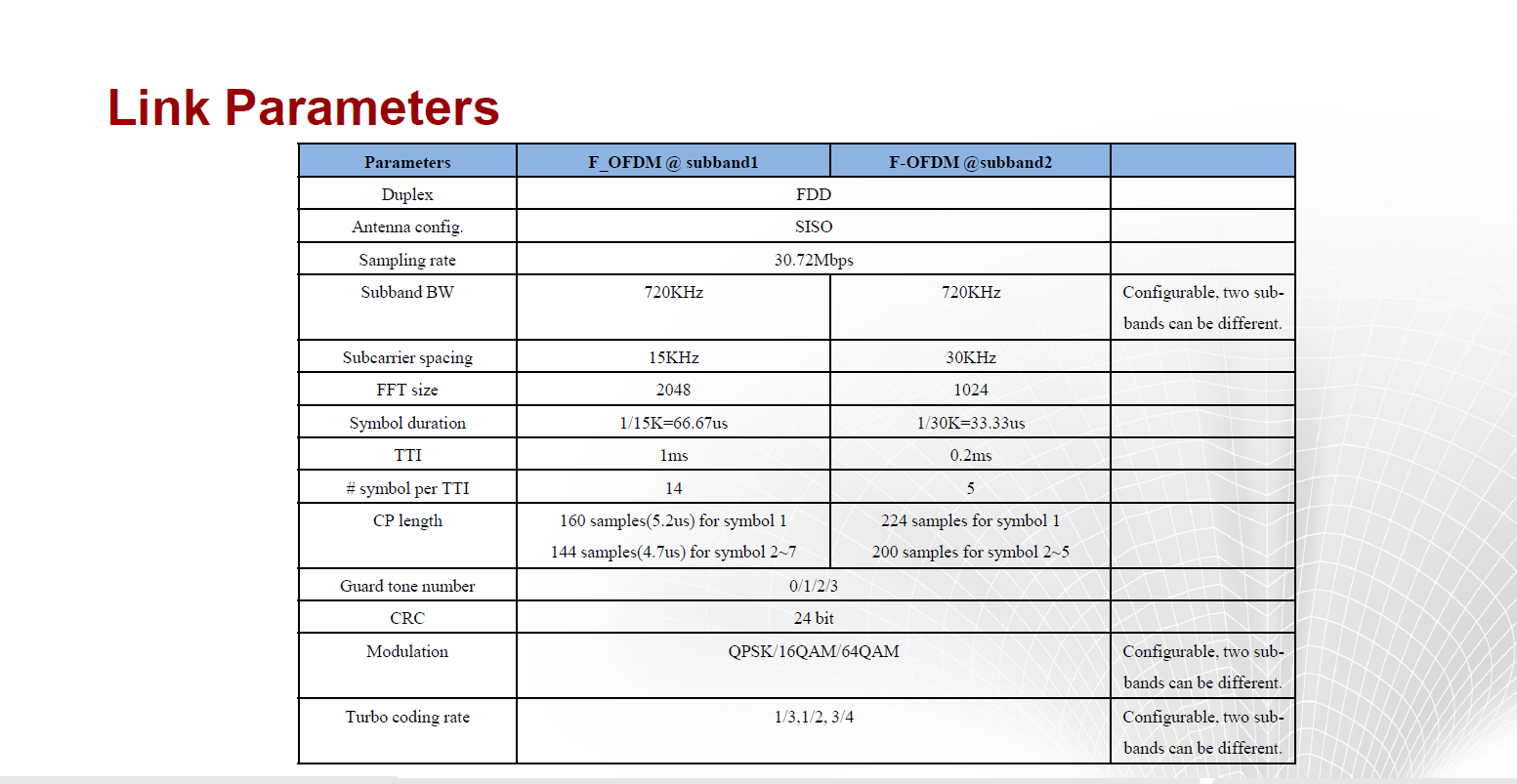Algorithm 1
Filtered-OFDM: Foundational Waveform for Self-adaptive Air Interface

|
||
| Primary waveform design of 5th generation wireless communications | ||
Modulation is the most fundamental physical layer technologies of wireless communication. CP-OFDM transmission has been widely adopted in 4G LTE, Wifi and other wireless communication systems, due to the advantages of high efficiency, simple for implementation and easy to combine with MIMO technology, etc. However, the traditional CP-OFDM system also has some weaknesses, such as leakage in out-band, rigorous requirement of synchronization and the entire bandwidth can be only configured with only one set of waveform parameters. 5G supports a various business scenarios. each scenario may need different waveform parameters and require dynamically reconfiguration of the waveform parameters based on the scenario, while still capable of achieving the benefits of the traditional CP-OFDM. Filtered-OFDM, OFDM based on subband filtering, can meet the needs of waveform for 5G. The system bandwidth is divided into sub-bands, there is only a very low overhead guard band between the sub-bands, each sub-band is configured for a different waveform parameters set according to the actual business scenario. Through the filter configuration, eachu subband would achieve its own configuration, and the combined 5G waveforms would supports dynamic soft parameters configuration for air-interface according the business modes. According to the above discription of the basic principles of F-OFDM, design the basic F-OFDM downlink communication system, and verify the system performance. Figure1: Simplified Downlink F-OFDM System to be Implemented ( Click picture to enlarge )  Table1: Link Parameters ( Click picture to enlarge )  |
||
|
Requirements:
According to the description in the training materials about F-OFDM, design/implement/verify the simplified F-OFDM downlink multi-user communication system, focusing on how to develop the sub-band filter, and investigate/validate the performance of F-OFDM. Works format:
1. Complete the simplified F-OFDM downlink multi-user link design documents, especially the sub-band filter design. 2. Complete simplify F-OFDM downlink multi-user link Matlab simulation, and gives OOB transmitter band performance, as well as receiver BLER (or PER) vs Eb / No waterfall curve. 3. Complete the simplified F-OFDM downlink multi-user link implementation on FPGA, test its performance (OOB transmitter band performance and a receiver waterfall curve (contrast with OFDM)) and provide processing latency and FPGA resource usage. Delivery Material:
1. F-OFDM downlink multi-user link design documentation, code and simulation results. 2. FPGA design specifications, code, and test results and test file. Winner Selection Criteria:
First Round
1. Finish the simplified F-OFDM downlink multi-user communication link system design documents, properly understandF-OFDM systems. 2. Matlab simulation output OOB transmitter band performance, and a receiver BLER (or PER) vs Eb/No of the waterfall curves, the link performance difference simulation test F-OFDM & OFDM are: waterfall curves BLER10% under conditions, SNR the difference is less than 0.3dB results. 3. Provide the architecture and method of designing the F-OFDM system based on the provided FPGA platform. Second Round
1. Complete the FPGA logic design with a simple F-OFDM downlink multi-user link. Correct decoding rate should be more than 90%. 2. On the FPGA system test performance curve (F-OFDM and OFDM), and with the simulation (allow refresh optimization) than the right, the difference is less than 0.5dB. 3. FPGA implemented algorithm design, data throughput, processing delays and FPGA chip resource use. |
||
| Reference Material | ||
|
1. 1st 5G Algorithm Innovation Competition-ENV1.0 - F-OFDM  |
||
